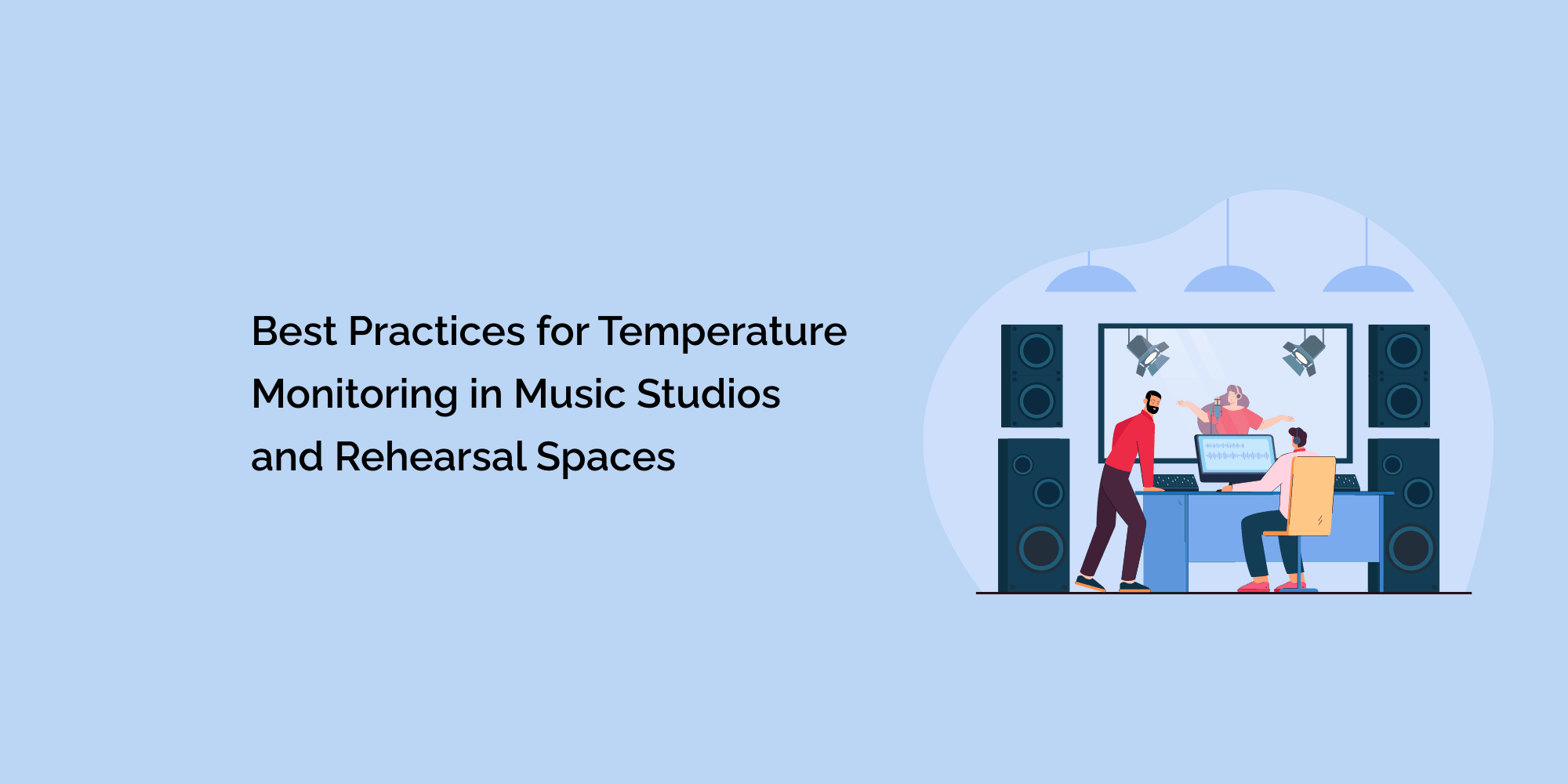Music studios and rehearsal spaces are creative sanctuaries where musicians bring their compositions to life and perfect their performances. These spaces often house valuable musical instruments, recording equipment, and delicate soundproofing materials. One crucial aspect that can significantly impact the productivity and condition of these spaces is temperature. Fluctuations in temperature can affect instrument tuning, recording quality, and the overall comfort of musicians. Temperature monitoring becomes indispensable to ensure optimal conditions for creativity and protect valuable equipment. In this blog, we will explore the best practices for temperature monitoring in music studios and rehearsal spaces, the potential risks posed by temperature changes, and practical solutions to maintain the ideal environment.
The Impact of Temperature on Music Studios and Rehearsal Spaces
Music studios and rehearsal spaces are home to various instruments, including string, woodwind, brass, and electronic devices, as well as sound recording and amplification equipment. Here's how temperature fluctuations can impact these spaces:
-
Instrument Tuning and Performance: Musical instruments are sensitive to temperature changes. Extreme heat or cold can cause materials like wood, metal, and strings to expand or contract, affecting instruments' tuning and sound quality. This can lead to a frustrating and time-consuming retuning process before each session.
-
Soundproofing Materials: Many music studios and rehearsal spaces incorporate soundproofing materials to minimize external noise and improve acoustics. Temperature changes can cause these materials, such as foam panels or acoustic treatments, to warp or lose effectiveness, impacting the overall sound quality.
-
Recording Equipment: Electronic devices used for recording and amplification can be affected by temperature fluctuations. High temperatures can lead to overheating, reducing the performance and lifespan of equipment.
- Musician Comfort: Comfortable conditions are essential for musicians to focus and perform at their best. High or low temperatures can reduce productivity and fatigue during long rehearsal or recording sessions.
Best Practices for Temperature Monitoring
Install Temperature Sensors and Monitors:
The first step in effective temperature monitoring is installing temperature sensors and monitors in key locations throughout the studio or rehearsal space. Place sensors near instrument storage areas, recording equipment, and the central control room. This enables real-time monitoring and alerts staff to any sudden temperature changes.
Utilize Data Logging and Cloud-Based Systems:
Data logging systems allow for continuous temperature monitoring and record-keeping. Cloud-based solutions provide the advantage of remotely accessing temperature data, making it convenient for studio managers or owners to monitor conditions even when not on-site.
Set Optimal Temperature Range:
Determine the optimal temperature range for the studio or rehearsal space, considering the specific needs of the instruments and equipment. Generally, a temperature range between 18-24 degrees Celsius (64-75 degrees Fahrenheit) is suitable for most musical instruments and electronics.
Implement Climate Control Systems:
Invest in climate control systems, such as air conditioning or heating units, to maintain a stable and consistent temperature within the desired range. Programmable thermostats can help regulate temperatures based on the studio's schedule, saving energy during idle hours.
Regular Calibration and Maintenance:
Ensure that temperature sensors and monitoring systems are calibrated regularly to provide accurate readings. Perform routine maintenance on climate control systems to prevent malfunctions and ensure they function optimally.
Monitor Humidity Levels:
In addition to temperature, monitoring humidity levels is equally important. High humidity can cause mold growth and damage to instruments, while low humidity can lead to cracks in wooden instruments. Use hygrometers alongside temperature monitors to keep track of humidity conditions.
Educate Studio Personnel:
Educate studio staff and musicians about the importance of temperature monitoring and its impact on instrument performance and equipment longevity. Encourage everyone to be mindful of temperature changes and promptly report any concerns.
Create Safe Storage Spaces:
Designate temperature-controlled storage spaces for musical instruments when not in use. Encourage musicians to store their devices in these spaces, reducing exposure to external temperature fluctuations.
Regular Instrument Maintenance:
Schedule regular maintenance for musical instruments to ensure their optimal condition. Regular check-ups by professional instrument technicians can identify issues caused by temperature changes and address them promptly.
Certainly! Here are some frequently asked questions (FAQs) about temperature monitoring in music studios and rehearsal spaces:
What are the potential risks of temperature changes on recording equipment?
High temperatures can lead to overheating and reduced performance of recording equipment, potentially causing malfunctions and affecting recorded audio quality.
What is the optimal temperature range for music studios and rehearsal spaces?
The optimal temperature range generally falls between 18-24 degrees Celsius (64-75 degrees Fahrenheit) for most musical instruments and equipment.
How can studios implement temperature monitoring effectively?
Studios can install temperature sensors and monitors in critical locations, utilize data logging and cloud-based systems, and set temperature ranges to ensure continuous monitoring and timely alerts.
Conclusion
Temperature monitoring in music studios and rehearsal spaces is about maintaining instrument tuning, protecting valuable equipment, and providing a conducive environment for creativity. Fluctuations in temperature can impact instrument performance, soundproofing materials, and recording equipment, affecting the overall quality of musical output.








